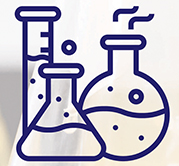With the air quality reaching hazardous levels and the carbon emissions rising at alarming rates in several countries, environmental conservation is rapidly becoming a priority for governments all over the world. As a result, they are increasingly taking various initiatives for raising public awareness about the environmental degradation caused due to the usage of fossil fuel-based power and promoting the adoption of renewable and green energy sources such as solar, hydro, biomass, and wind for electricity generation.
This drastic rise in the adoption of green technologies is massively fueling the surge in the demand for distributed energy generation systems across the world. This is mainly because these systems are highly eco-friendly and thus, majorly mitigate the carbon emissions released into the atmosphere during power production. Moreover, the decentralized operation provided by the distributed energy generation systems significantly reduce the power losses that usually occur during transmission from one place to another.
The massive fluctuations in the prices of crude oil and natural gas are propelling the adoption of various renewable energy sources such as biomass, solar, and wind. Because of these reasons, the global distributed energy generation systems market is predicted to exhibit huge growth over the next few years. These systems include a wide array of storage, energy generation and monitoring, and control solutions such as combined power and heat, energy storage, distributed energy management systems, and power generation.
Geographically, the European distributed energy generation systems market is presently very prosperous, as per the findings of P&S Intelligence, a market research firm based in India. The main factors responsible for the large-scale usage of these systems in this region are the huge financial incentives being provided by the governments of several European countries for the adoption of these systems and the soaring energy consumption by the industrial and commercial sectors of the regional countries.
Hence, it can be said with confidence that the demand for distributed energy generation systems will rise enormously all over the world in the future years, primarily because of the growing adoption of renewable energy and the rising requirement for energy storage and management solutions in order to mitigate power losses during transmission and reduce carbon emissions.
















